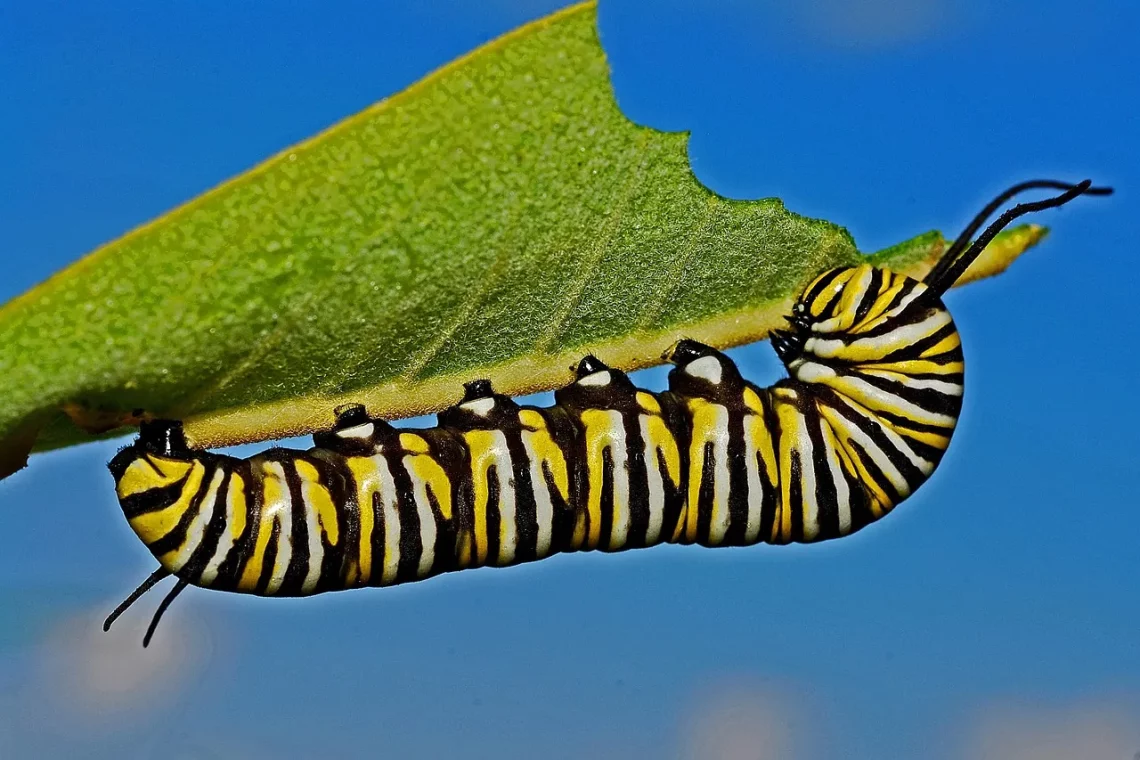
The Fascinating Life Cycle of the Pumpkin Caterpillar Explained
The pumpkin caterpillar, known scientifically as the *Cucullia convexipennis*, is a fascinating creature that captivates both entomologists and garden enthusiasts alike. This unique insect is often associated with the fall season, particularly due to its connection with pumpkins and other gourds. As an essential part of the ecosystem, the pumpkin caterpillar plays a significant role in the food chain, serving as both a pollinator and a food source for various birds and other predators. Its life cycle is a remarkable journey of transformation and adaptation that not only highlights the beauty of nature but also serves as a reminder of the delicate balance within ecosystems.
Understanding the pumpkin caterpillar’s life cycle offers insights into the broader world of metamorphosis in insects. From the egg stage to adulthood, each phase of its development is marked by distinct behaviors and physiological changes. The pumpkin caterpillar’s vibrant coloration and unique feeding habits further enhance its allure, making it a subject of study for many. Whether you are a gardener looking to protect your crops or simply a lover of nature, exploring the life cycle of this remarkable caterpillar can deepen your appreciation for the intricate relationships that exist in our natural world.
The Stages of Development: From Egg to Caterpillar
The journey of the pumpkin caterpillar begins with the laying of eggs, typically on the underside of pumpkin leaves or other related plants. These eggs are small, round, and usually green, blending seamlessly with their surroundings to avoid predation. After a few days, the eggs hatch, and tiny caterpillars emerge, ready to embark on their feeding frenzy. This juvenile stage is crucial, as the caterpillars must consume a significant amount of foliage to grow and develop.
Once hatched, the caterpillars begin to feed voraciously on the leaves of their host plants. Their diet primarily consists of pumpkin leaves, but they are also known to munch on squash and other gourds. As they grow, they undergo a series of molts, shedding their skin multiple times. This molting process is essential for growth, as the caterpillar’s exoskeleton does not expand. With each molt, the caterpillar increases in size and changes in appearance, often becoming more colorful and striking.
During this stage, the caterpillars are highly vulnerable to predators. Birds, spiders, and other insects are on the lookout for these tasty morsels. To protect themselves, pumpkin caterpillars may exhibit various defense mechanisms, such as mimicking the appearance of leaves or using their vibrant colors as a warning signal to potential predators. This stage can last several weeks, depending on environmental conditions and the availability of food.
As the caterpillar approaches maturity, it begins to prepare for the next stage of its life cycle. This preparation often involves a significant increase in feeding to store energy for the metamorphosis ahead. Once they have reached a sufficient size, the caterpillars will seek out a safe location to pupate, marking the transition from larva to pupa.
Pupation: The Transformation into a Chrysalis
The pupation stage is one of the most fascinating aspects of the pumpkin caterpillar’s life cycle. After locating a suitable spot, the caterpillar will form a protective casing around itself, known as a chrysalis or pupa. This stage is critical for the caterpillar, as it is during this time that it undergoes a remarkable transformation into an adult moth.
Inside the chrysalis, the caterpillar’s body is undergoing significant changes. The caterpillar’s tissues are broken down and reorganized to form the structures of the adult moth. This process of metamorphosis can take several days to weeks, depending on environmental factors such as temperature and humidity. During this time, the chrysalis may remain motionless, camouflaged against the backdrop of its surroundings to avoid detection by predators.
The duration of the pupation stage can vary significantly. In warmer climates, the transformation may be quicker, while in cooler regions, it may take longer. Once the metamorphosis is complete, the adult moth is ready to emerge. The chrysalis will split open, and the newly formed moth will begin its journey into the world.
Upon emerging, the adult pumpkin moth has to pump fluid into its wings to expand them fully. This process is vital, as the wings need to dry and harden before the moth can take flight. The adult moth is characterized by its striking appearance, with intricate patterns and colors that are often used for camouflage against potential predators.
The Adult Stage: Mating and Lifespan
Once the adult pumpkin moth has taken flight, its primary goal is to mate and continue the cycle of life. Mating typically occurs shortly after the moth emerges from the chrysalis. The male moths use pheromones to attract females, and once a pair has mated, the female will seek out suitable plants to lay her eggs.
The lifespan of the adult pumpkin moth is relatively short, often lasting only a few weeks. However, during this time, they play a significant role in pollination, contributing to the growth of various plants in their habitat. The adult moths are primarily nocturnal, becoming active at night when they are less likely to encounter predators.
In addition to their role in pollination, adult pumpkin moths are also a food source for various predators. Birds, bats, and other nocturnal creatures rely on these moths as part of their diet. The balance between predator and prey is vital for maintaining healthy ecosystems, highlighting the interconnectedness of different species.
As the adult moth nears the end of its life, it will once again lay eggs, thus completing the life cycle of the pumpkin caterpillar. This cyclical nature of life emphasizes the importance of each stage in the development of the species and its contribution to the environment.
Ecological Importance and Conservation
The pumpkin caterpillar, along with its adult moth counterpart, plays a vital role in the ecosystem. As herbivores, they help control plant populations by feeding on leaves, which in turn promotes the growth of new foliage and supports overall plant health. Additionally, their role as pollinators is crucial for the reproduction of many flowering plants, including pumpkins, squash, and other crops. This relationship between the caterpillar and the plants it feeds on exemplifies the delicate balance of nature.
However, like many species, pumpkin caterpillars face threats from habitat loss, pesticide use, and climate change. These factors can significantly impact their populations and the ecosystems they inhabit. Conservation efforts are essential to ensure the survival of these fascinating creatures and the health of the environments they support.
Gardening practices can also play a role in the conservation of pumpkin caterpillars. By reducing pesticide use and incorporating native plants into gardens, enthusiasts can create a more welcoming habitat for these insects. Educating others about the ecological importance of the pumpkin caterpillar can further foster appreciation and support for conservation initiatives.
In conclusion, the pumpkin caterpillar’s life cycle is a remarkable journey filled with transformation and ecological significance. From its beginnings as a tiny egg to its emergence as a beautiful moth, each stage of its development highlights the intricate connections within ecosystems. By understanding and appreciating these creatures, we can work towards conserving them for future generations.
*Please note that this article does not constitute medical advice. If you have health concerns, please consult a healthcare professional.*




